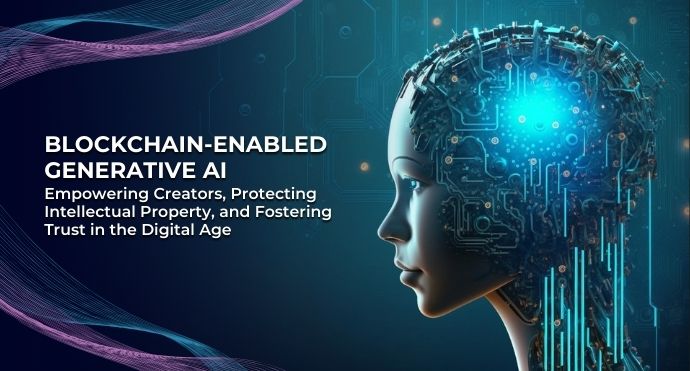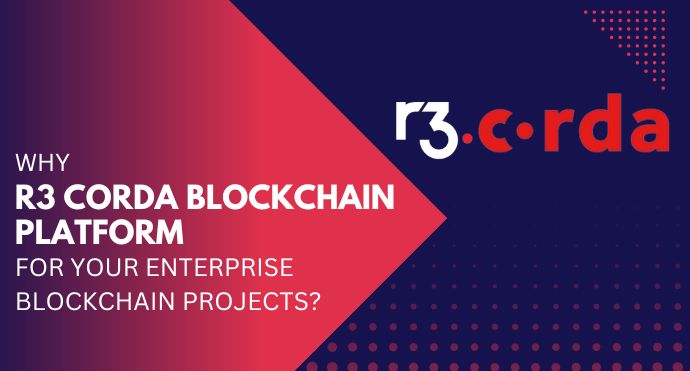Generative AI is a rapidly emerging field with the potential to revolutionize the way we create and consume content. By leveraging large datasets to learn and generate new content, generative AI models can create realistic and engaging experiences in a variety of domains, including art, music, games, and entertainment.
While generative AI has the potential to create new opportunities for creators and consumers alike, it also raises some important challenges, such as data provenance, authenticity, privacy, and intellectual property protection. Blockchain technology can play a significant role in addressing these challenges and unlocking the full potential of generative AI.
Empowering Creators
One of the key benefits of blockchain-enabled generative AI is that it can empower creators to retain ownership of their work and be compensated for its use. Blockchain can be used to create verifiable records of ownership and authenticity, making it difficult for others to steal or counterfeit content.
For example, artists can use blockchain to mint their generative AI-created art as non-fungible tokens (NFTs). NFTs are unique digital assets that can be bought, sold, and traded on blockchain-based marketplaces. This allows artists to sell their work directly to consumers and avoid intermediaries.
Another way that blockchain can empower creators is by enabling them to share their work with others in a secure and private manner. For example, a game developer could use blockchain to store and share user-generated content, such as levels and mods. This ensures that users retain ownership of their creations and that they are compensated for their use.
Protecting Intellectual Property
Blockchain can also help to protect intellectual property rights in the context of generative AI. By creating a tamper-proof record of data provenance and ownership, blockchain can make it more difficult for others to plagiarize or steal generative AI-created content.
For example, a music producer could use blockchain to store and share their generative AI-created music. This would create a verifiable record of ownership and authenticity, making it difficult for others to claim the music as their own.
Blockchain can also be used to create new forms of intellectual property protection, such as copyright protection for generative AI-created code. For example, a software developer could use blockchain to register their generative AI-created code as a copyright. This would give them the legal right to prevent others from copying or distributing their code without their permission.
Fostering Trust in the Digital Age
Blockchain can also help to foster trust in the digital age by providing a transparent and tamper-proof record of transactions. This is particularly important in the context of generative AI, where there is a risk of fraud and deception.
For example, a company could use blockchain to track and verify the provenance of its generative AI-created products. This would give consumers the confidence that they are buying authentic products.
Blockchain can also be used to create new forms of trust-based systems for generative AI. For example, a platform could use blockchain to facilitate the sharing of data between different generative AI models. This would allow models to learn from each other and improve their performance while still ensuring that data remains private and secure.
Data provenance and authenticity: Generative AI models rely on large datasets to learn and generate content. However, ensuring the quality and authenticity of this data is a challenge. Blockchain can provide a transparent and tamper-proof record of data provenance, enabling users to verify the legitimacy of generated content. This can help to mitigate issues such as plagiarism, fraud, and deepfakes.
Key challenges and limitations of this emerging field-
Data sharing and privacy: Generative AI models can benefit from access to diverse datasets. However, sharing sensitive data raises privacy concerns. Blockchain can enable secure and privacy-preserving data sharing by encrypting data and storing it on decentralized networks. Smart contracts can be used to define the terms and conditions for data usage, ensuring that data owners retain control over their information.
Interoperability and collaboration: Generative AI models are becoming increasingly complex and sophisticated. This can make it difficult to collaborate between different stakeholders and integrate different models. Blockchain can provide a common platform for sharing and exchanging data, enabling seamless collaboration and integration between different models. This can help to accelerate the development and adoption of generative AI solutions.
Intellectual property protection: Generative AI models can be used to create new forms of intellectual property, such as artistic works, music, and code. Blockchain can be used to secure and track ownership of these digital assets, making it easier for creators to monetize their work.
Some examples of how blockchain is being used to enhance generative AI:
Verify NFT: This platform uses blockchain to verify the authenticity of generative AI-created art. Artists can mint their work as NFTs, which are then stored on the blockchain. This makes it possible for buyers to verify that the art is genuine and that they are the rightful owners.
AI Dungeon: This text-generating AI game uses blockchain to store and share user-generated content. This ensures that users retain ownership of their creations and that they are compensated for their use.
Enlitic: This healthcare company is using blockchain to develop generative AI models that can identify and diagnose diseases. Their models are trained on large datasets of medical images and data, and they can be used to make more accurate diagnoses than traditional methods.
Symbiont: This financial technology company is using blockchain to develop generative AI models that can predict financial market trends. Their models are trained on large datasets of historical financial data, and they can be used to make more informed investment decisions.
Conclusion:
Blockchain has the potential to play a transformative role in the field of generative AI. By addressing key challenges such as data provenance, authenticity, privacy, and intellectual property protection, blockchain can empower creators to retain ownership of their work and be compensated for its use.
As generative AI continues to develop, we can expect to see even more innovative and transformative applications emerge. Blockchain will be essential to supporting these applications and ensuring that they are fair, transparent, and secure.



